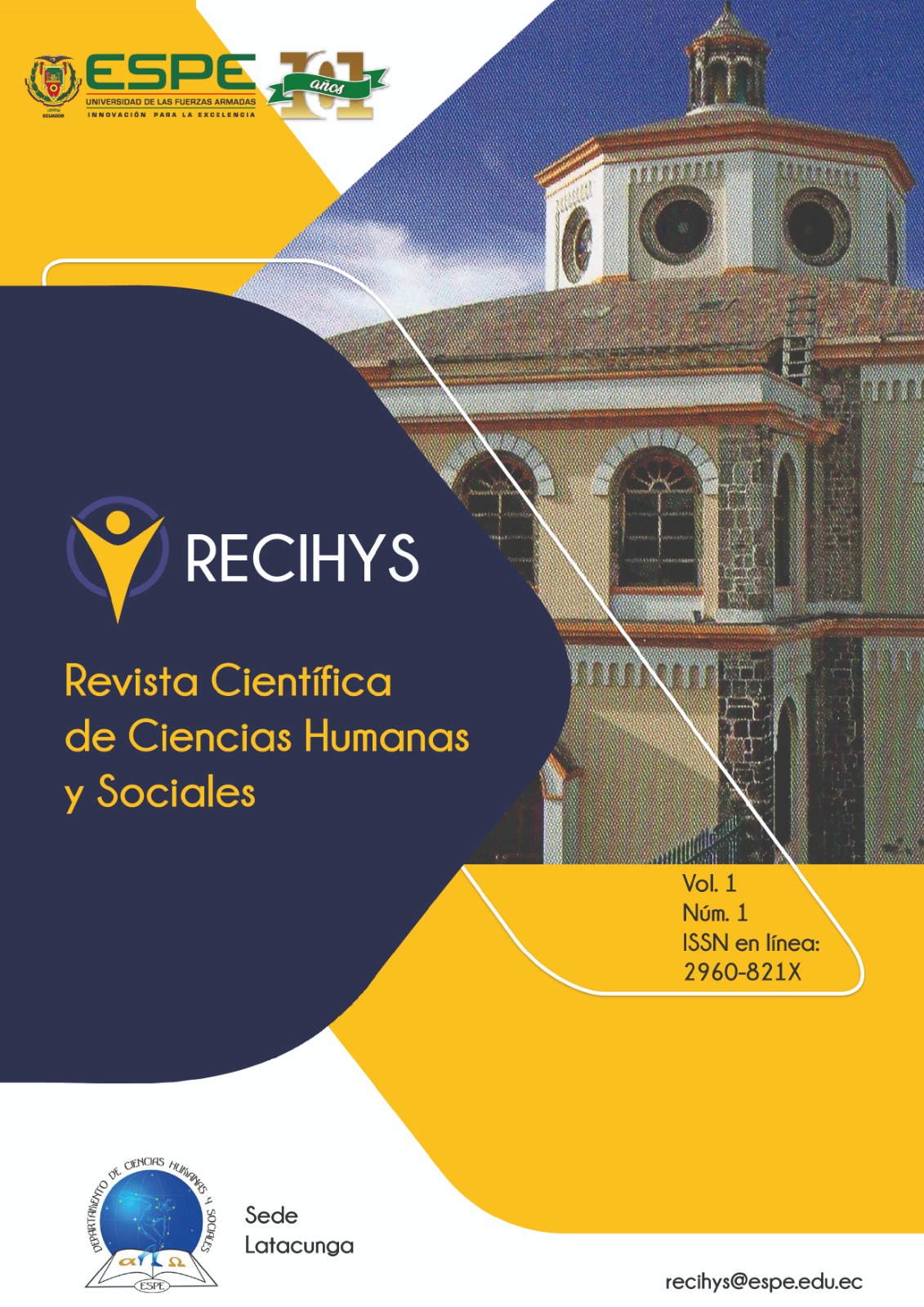Folkloric dance and its contribution to the reduction of sedentary lifestyle in teaching staff
Main Article Content
Abstract
The teaching staff is going through an occupational health problem due to the long working hours that they have little free time left to develop; One of the factors that affects the sedentary lifestyle of teachers, is the null practice of work recreation within the school institutions, since it originates from the ignorance of the benefits offered by recreation, it is precisely in this research that emphasizes the awareness of the benefits of work recreation in teaching staff, focused from the dance part within the working day in the face of this problem there is a large number of studies that explain the benefits of work recreation as a strategy to reduce sedentary lifestyle in teachers of the tax education system. For this reason, the article focuses its attention on evaluating a recreational program of folkloric dance as a means of reducing sedentary lifestyle aimed at high school teachers of the fiscal system. The project is based on different research designs starting from the documentary, field and quasi-experimental analysis, through the application of tests directed to the teachers and the sedentary lifestyle that allowed to collect significant amounts to determine the diagnosis; As a result of these investigative analyzes, the final conclusion was reached that responds to the stated objective, which is to reduce sedentary lifestyle in teachers. Therefore, it is affirmed that the Folk Dance Recreational Program has significant effects on the reduction of sedentary lifestyle in secondary education teachers of the fiscal system.
Downloads
Article Details

This work is licensed under a Creative Commons Attribution 4.0 International License.
Authors who publish in this journal agree to the following terms: Authors retain the copyright and guarantee the journal the right to be the first publication of the work, as well as, licensed under a Creative Commons Attribution License that allows others share the work with an acknowledgment of the authorship of the work and the initial publication in this journal. Authors may separately establish additional agreements for the non-exclusive distribution of the version of the work published in the journal (for example, placing it in an institutional repository or publishing it in a book), with acknowledgment of its initial publication in this journal. Authors are allowed and encouraged to disseminate their work electronically (for example, in institutional repositories or on their own website) before and during the submission process, as it may lead to productive exchanges as well as further citation earliest and oldest of published works.
How to Cite
References
Aguilar Chasipanta, W., Bayas Cano, A., Balarezo Mendoza, E., & Galarza, C. (2017). Danza folklórica ecuatoriana: Estudio comparativo para mejorar su enseñanza. Educación Física y Ciencia, 19(1), 027. https://doi.org/10.24215/23142561e027
Aldas, H. (2014). La-Cultura-Fisica-y-su-formacion-profesional-en-la-Republica-del-Ecuador-Physical-Culture-and-his-job-training-in-the-Republic-of-Ecuador-Ambitos-de-la-Cultura-Fisica.pdf. https://www.researchgate.net/profile/Henry_Cayo/publication/329609209_La_Cultura_Fisica_y_su_formacion_profesional_en_la_Republica_del_Ecuador_Physical_Culture_and_his_job_training_in_the_Republic_of_Ecuador_Ambitos_de_la_Cultura_Fisica/links/5c11ec5692851c39ebe92da4/La-Cultura-Fisica-y-su-formacion-profesional-en-la-Republica-del-Ecuador-Physical-Culture-and-his-job-training-in-the-Republic-of-Ecuador-Ambitos-de-la-Cultura-Fisica.pdf
Álvarez Castro, S., & Domínguez Lacayo, M. D. C. (2012). La expresión artística: Otro desafío para la educación rural. Revista Electrónica Educare, 16(3), 115-126. https://doi.org/10.15359/ree.16-3.7
Arias Odón, F. (2012). EL PROYECTO DE INVESTIGACIÓN 6a EDICIÓN. https://www.researchgate.net/publication/301894369_EL_PROYECTO_DE_INVESTIGACION_6a_EDICION
Arias-Gómez, J., Villasís-Keever, M. Á., & Miranda-Novales, M. G. (2016). El protocolo de investigación III: La población de estudio. Revista Alergia México, 63(2), 201. https://doi.org/10.29262/ram.v63i2.181
Asensi-Artiga, V., & Parra-Pujante, A. (2002). El método científico y la nueva filosofía de la ciencia. Anales de Documentación, 5, 9-19.
Baldeón, M., & Ximena, J. (2019). Danza folklórica ecuatoriana y convivencia escolar de las niñas y niños de 3 a 5 años del Centro de Desarrollo Infantil “San Andrés” del Distrito Metropolitano de Quito en el periodo lectivo 2018—2019. http://www.dspace.uce.edu.ec/handle/25000/19624
Castán, Y. (2012). INTRODUCCIÓN AL MÉTODO CIENTÍFICO Y SUS ETAPAS. 6.
Cortés., M., Iglesias, M., & Universidad Autónoma del Carmen (Campeche). (2005). Generalidades sobre metodología de la investigación. Universidad Autónoma del Carmen.
Cortés, Manuel, & Iglesias, M. (2004). Generalidades sobre metodología de la investigación. https://www.rua.unam.mx/portal/recursos/ficha/16760/generalidades-sobre-metodologia-de-la-investigacion
Cossio-Bolaños, M. (2020). Actividad física en tiempos de cuarentena por el COVID-19 en niños y adolescentes. Revista Peruana de ciencia de la actividad fisica y del deporte, 7(2), 2-2.
Cuenca, M. (2019, octubre 21). El ocio como derecho. Manuel Cuenca. https://manuelcuenca.es/el-ocio-como-derecho/
Delgado, Á. A., & Gómez, E. A. (2011). Bases teórico-metodológicas para el estudio semiológico y contextual de la danza folclórica. Gazeta de Antropología, 27(2). http://www.gazeta-antropologia.es/?p=1418
Díez-Palomar, J., & García, R. F. (2010). Comunidades de Aprendizaje: Un proyecto de transformación social y educativa. 13.
Galvan, M. (2015). ¿QUE ES CALIDAD DE VIDA? https://www.uaeh.edu.mx/scige/boletin/prepa2/n2/m2.html
Gerlero, J. C. (2011). La Recreación como derecho constitucional en América Latina. Un estudio para reflexionar sobre el alcance de la recreación en Latinoamérica. 16.
Guerrero, F. (16d. C.). «Fitness Folklore»: La entretenida forma de buscar la salud, el movimiento y la cultura—Salud y Bienestar—24horas. https://www.24horas.cl/tendencias/salud-bienestar/fitness-folklore-la-entretenida-forma-de-buscar-la-salud-el-movimiento-y-la-cultura-2109844
Heras, A., Carrión, T., Largo, N., García, D., Flores, E., Bautista, D., Guzñay, X., Ávila, F., & Cárdenas, D. (2019). Con la danza folklórica se forma disciplina y se fortalece nuestra identidad. http://repositorio.unae.edu.ec/handle/56000/1258
Hidalgo, I. I. V. (2005). Tipos de estudio y métodos de investigación. 12.
ICIM. (2020, abril 13). Cuarentena: Origen del concepto, qué significa y cuál es su implicancia como medida sanitaria. Instituto de Ciencias e Innovación en Medicina. https://medicina.udd.cl/icim/2020/04/13/cuarentena-origen-del-concepto-que-significa-y-cual-es-su-implicancia-como-medida-sanitaria/
Izurieta-Monar, A. (2019). Causas y consecuencias del sedentarismo: Más Vita, 1(2), 26-31.
Jesús, G. (2015). La Recreación y su Valor Educativo. http://jesusgerardosoto.blogspot.com/2015/07/recreacion-valor-educativo_12.html
Lopategui, E. (2000). RECREACIÓN © 2000 Edgar Lopategui Corsino. http://www.saludmed.com/Bienestar/Cap6/Recrear.html

